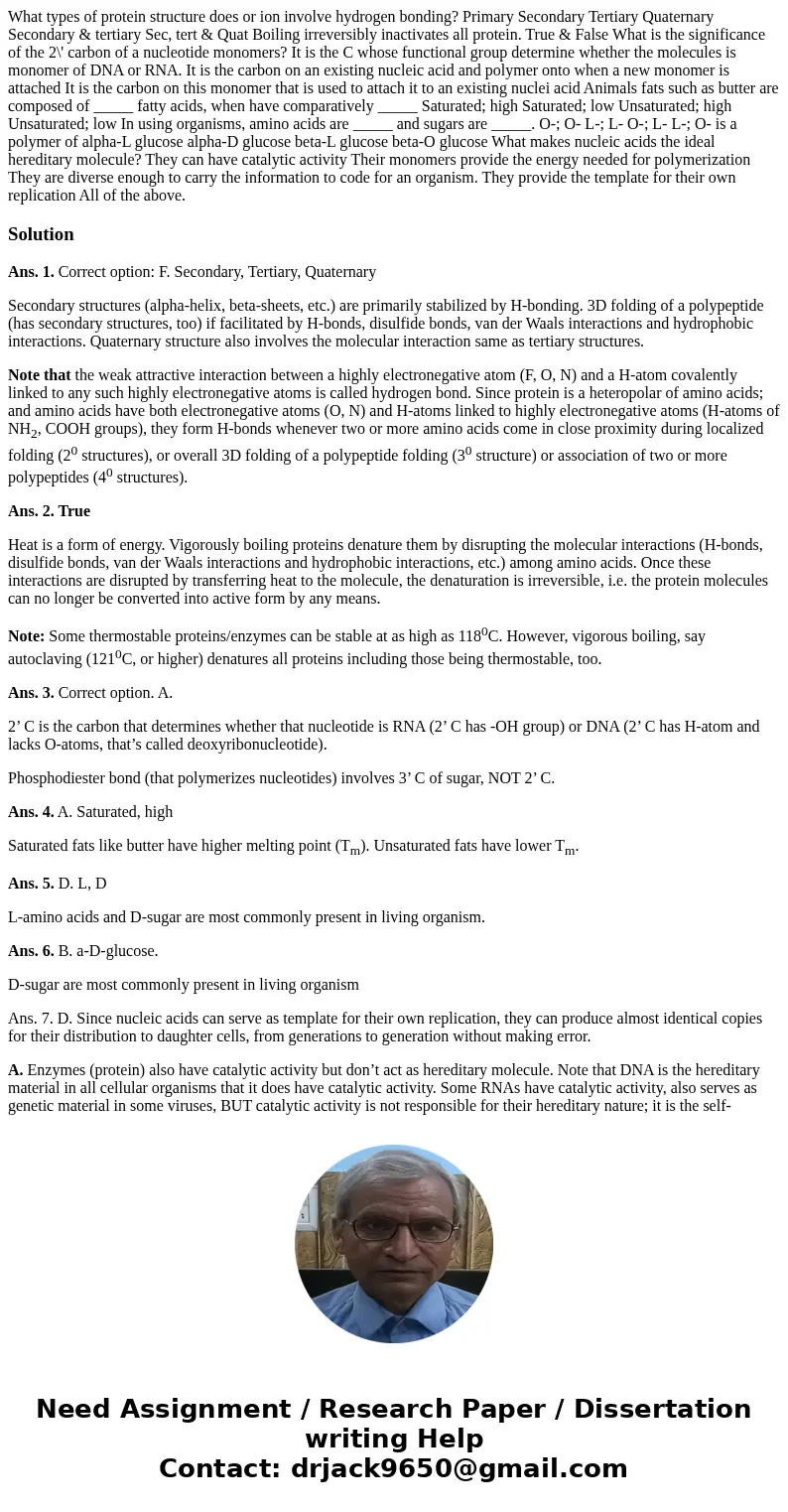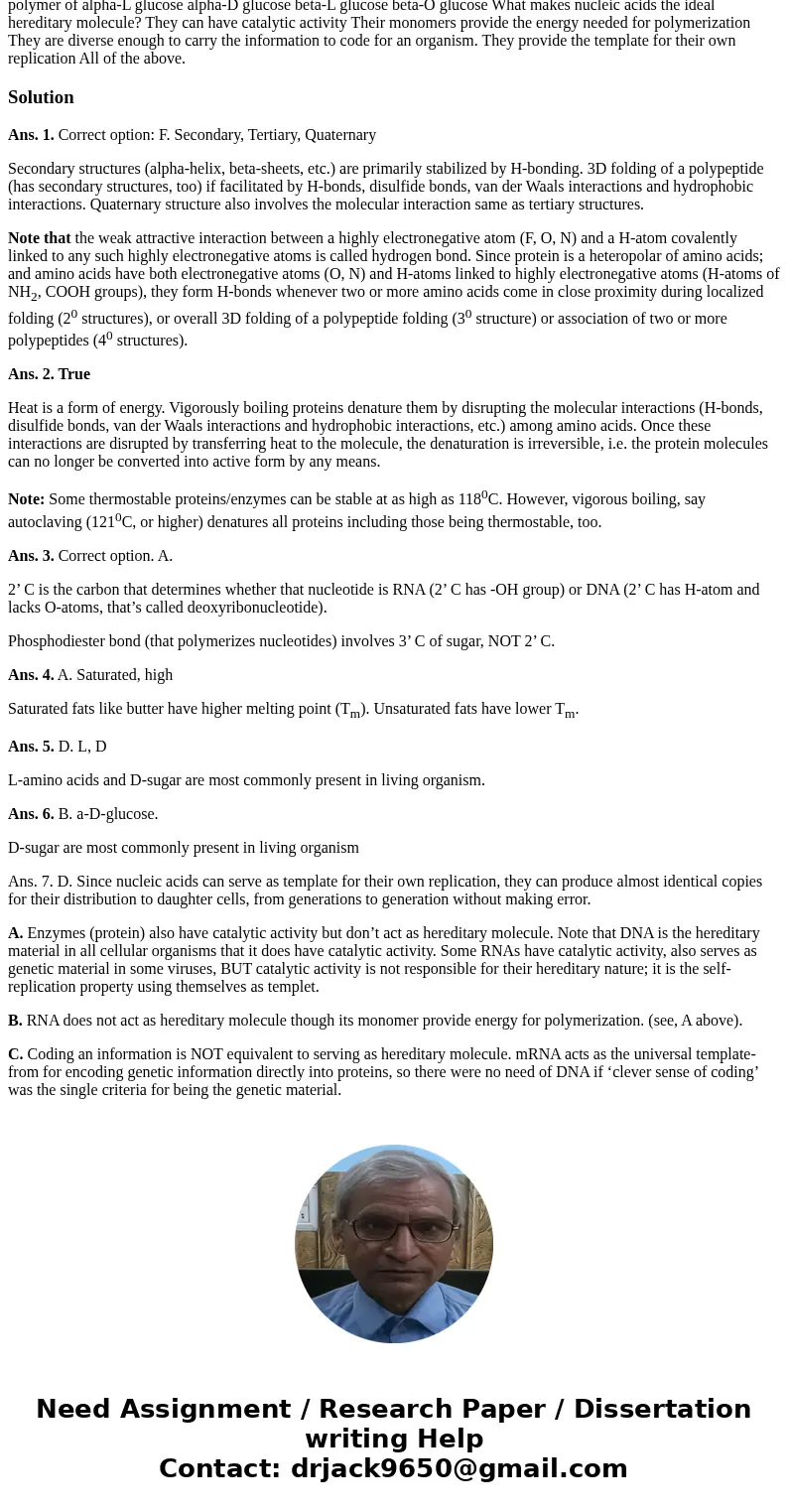What types of protein structure does or ion involve hydrogen
Solution
Ans. 1. Correct option: F. Secondary, Tertiary, Quaternary
Secondary structures (alpha-helix, beta-sheets, etc.) are primarily stabilized by H-bonding. 3D folding of a polypeptide (has secondary structures, too) if facilitated by H-bonds, disulfide bonds, van der Waals interactions and hydrophobic interactions. Quaternary structure also involves the molecular interaction same as tertiary structures.
Note that the weak attractive interaction between a highly electronegative atom (F, O, N) and a H-atom covalently linked to any such highly electronegative atoms is called hydrogen bond. Since protein is a heteropolar of amino acids; and amino acids have both electronegative atoms (O, N) and H-atoms linked to highly electronegative atoms (H-atoms of NH2, COOH groups), they form H-bonds whenever two or more amino acids come in close proximity during localized folding (20 structures), or overall 3D folding of a polypeptide folding (30 structure) or association of two or more polypeptides (40 structures).
Ans. 2. True
Heat is a form of energy. Vigorously boiling proteins denature them by disrupting the molecular interactions (H-bonds, disulfide bonds, van der Waals interactions and hydrophobic interactions, etc.) among amino acids. Once these interactions are disrupted by transferring heat to the molecule, the denaturation is irreversible, i.e. the protein molecules can no longer be converted into active form by any means.
Note: Some thermostable proteins/enzymes can be stable at as high as 1180C. However, vigorous boiling, say autoclaving (1210C, or higher) denatures all proteins including those being thermostable, too.
Ans. 3. Correct option. A.
2’ C is the carbon that determines whether that nucleotide is RNA (2’ C has -OH group) or DNA (2’ C has H-atom and lacks O-atoms, that’s called deoxyribonucleotide).
Phosphodiester bond (that polymerizes nucleotides) involves 3’ C of sugar, NOT 2’ C.
Ans. 4. A. Saturated, high
Saturated fats like butter have higher melting point (Tm). Unsaturated fats have lower Tm.
Ans. 5. D. L, D
L-amino acids and D-sugar are most commonly present in living organism.
Ans. 6. B. a-D-glucose.
D-sugar are most commonly present in living organism
Ans. 7. D. Since nucleic acids can serve as template for their own replication, they can produce almost identical copies for their distribution to daughter cells, from generations to generation without making error.
A. Enzymes (protein) also have catalytic activity but don’t act as hereditary molecule. Note that DNA is the hereditary material in all cellular organisms that it does have catalytic activity. Some RNAs have catalytic activity, also serves as genetic material in some viruses, BUT catalytic activity is not responsible for their hereditary nature; it is the self-replication property using themselves as templet.
B. RNA does not act as hereditary molecule though its monomer provide energy for polymerization. (see, A above).
C. Coding an information is NOT equivalent to serving as hereditary molecule. mRNA acts as the universal template-from for encoding genetic information directly into proteins, so there were no need of DNA if ‘clever sense of coding’ was the single criteria for being the genetic material.


 Homework Sourse
Homework Sourse